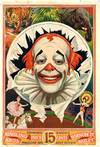

Can Our Cities Survive?
by J. L. M. Sert
- Used
- Very Good
- Hardcover
- Condition
- Very Good
- Seller
-
Charlottesville, Virginia, United States
Payment Methods Accepted
About This Item
EB. Very Good. Hardcover. Hardcover. 4to. Harvard University Press, Cambridge, MA. 1947. 259 pgs. Illustrated throughout in black & white. Third Printing. Bound in blue cloth with titles present to the spine and the front board. Boards have wear present to the extremities of the boards (edges of the spine are lightly chipped and worn). Previous owner's name present to the front pastedown. Text is clean and free of marks. Binding tight and solid. Classic C. I. A. M. Publication on town planning, with very inventive graphics. Josep Lluís Sert I López (1 July 1902 – 15 March 1983) was a Spanish architect and city planner. Born in Barcelona, Catalonia, Sert showed keen interest in the works of his uncle, the painter Josep Maria Sert, and of Gaudí. He studied architecture at the Escola Superior d'Arquitectura in Barcelona and set up his own studio in 1929. That same year Sert moved to Paris, in response to an invitation from Le Corbusier to work for him (without payment). Returning to Barcelona in 1930, he continued his practice there until 1937. During the 1930s, Sert co-founded the group GATCPAC (Grup d'Artistes I Tècnics Catalans per al Progrés de l'Arquitectura Contemporània, i. E. Group of Catalan Artists and Technicians for the Progress of Contemporary Architecture) , which later became, with the addition of the western and north groups, the GATEPAC (Grupo de Artistas y Técnicos Españoles para el Progreso de l'Arquitectura Contemporánea) , which was in turn the Spanish branch of the Congrès International d'Architecture Moderne (CIAM). Sometime later, Sert became President of CIAM (1947–56). He created several outstanding pieces of modern architecture during this period, such as the week-end house in El Garraf, Catalonia, Spain (1935) , the Central Dispensary of Barcelona (1935) and the Master Plan for the City of Barcelona (1933–35). From 1937 through 1939, Sert lived in Paris, where he designed the Spanish Republic's pavilion at the World's Fair, the Paris Exposition of 1937. For the artistic content of the building, Sert called on his Spanish artist friends Picasso, Miró, and Calder; Picasso's contribution was Guernica and became the focal attraction of Sert's design. EB; 8vo 8" - 9" tall .
Reviews
(Log in or Create an Account first!)
Details
- Bookseller
- Last Exit Books
(US)
- Bookseller's Inventory #
- 58742
- Title
- Can Our Cities Survive?
- Author
- J. L. M. Sert
- Format/Binding
- Hardcover
- Book Condition
- Used - Very Good
- Place of Publication
- EB
Terms of Sale
Last Exit Books
All sales considered final. All items described to the best of my ability. Returns considered if sent back within 10 days of reciept with an email explanation sent to me first or if the item fails to match description. Refunds processed upon the reciept of the book.
�
About the Seller
Last Exit Books
Biblio member since 2005
Charlottesville, Virginia
About Last Exit Books
Please call ahead if you are visiting. Also, please have the title or number of the book that you before you come to visit. Sorry, but no browsing.
Glossary
Some terminology that may be used in this description includes:
- Tight
- Used to mean that the binding of a book has not been overly loosened by frequent use.
- Cloth
- "Cloth-bound" generally refers to a hardcover book with cloth covering the outside of the book covers. The cloth is stretched...
- Fair
- is a worn book that has complete text pages (including those with maps or plates) but may lack endpapers, half-title, etc....
- Spine
- The outer portion of a book which covers the actual binding. The spine usually faces outward when a book is placed on a shelf....

